Lhotse and Lhotse GlacierLhotse (8501 m) is the world’s 4th highest peak, and has a spectacular south face, some 3000 m high. Ice and snow avalanches are the principal source for Lhotse Glacier, which flows for 8.5 km down to an elevation of about 4800 m. The surface of the glacier is totally debris-mantled, with ice exposed only in steep-sided surface ponds. |
 The 3000 m-high south face of Lhotse from which ice and rock feed the debris-covered glacier below. | 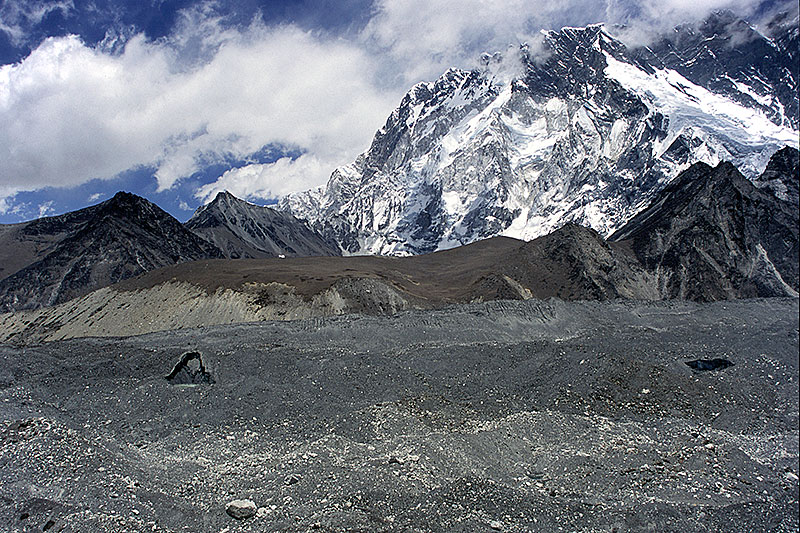 The middle reach of Lhotse Glacier, showing near-complete debris cover and heavily pitted surface. | 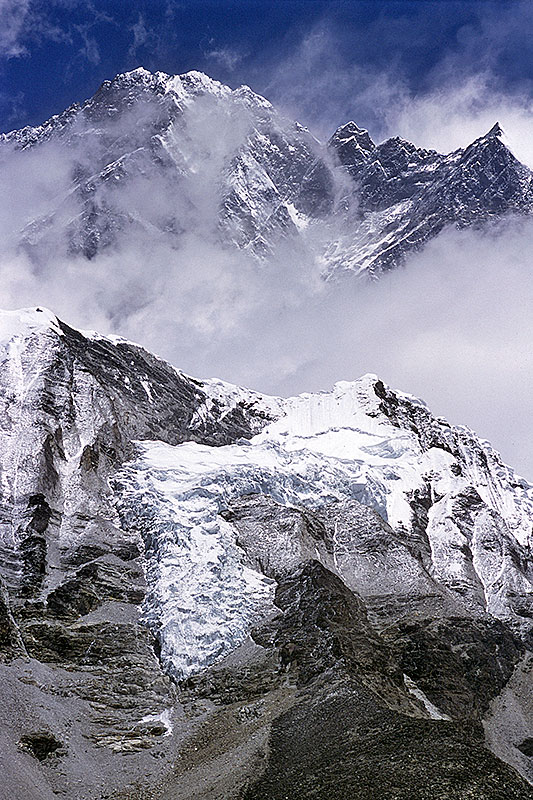 Telephoto of a hanging glacier on one of the spurs of Lhotse. | 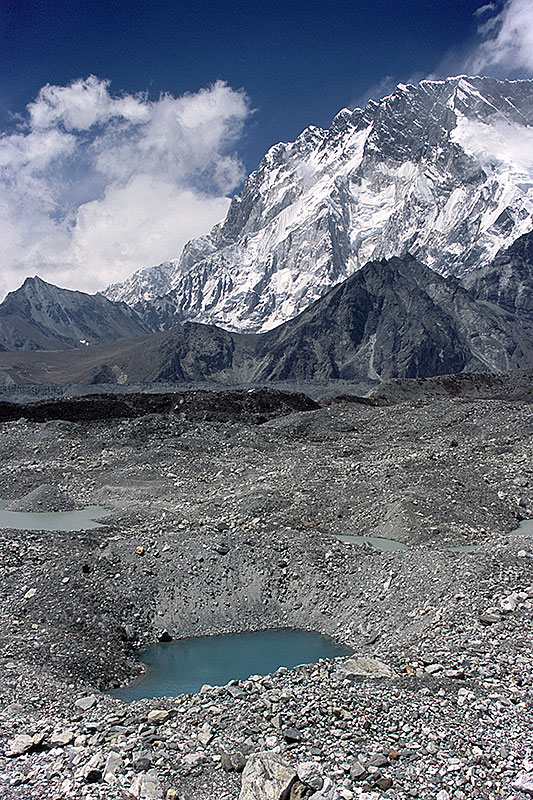 The pitted surface of Lhotse Glacier with mounds enclosing a supraglacial pond. |
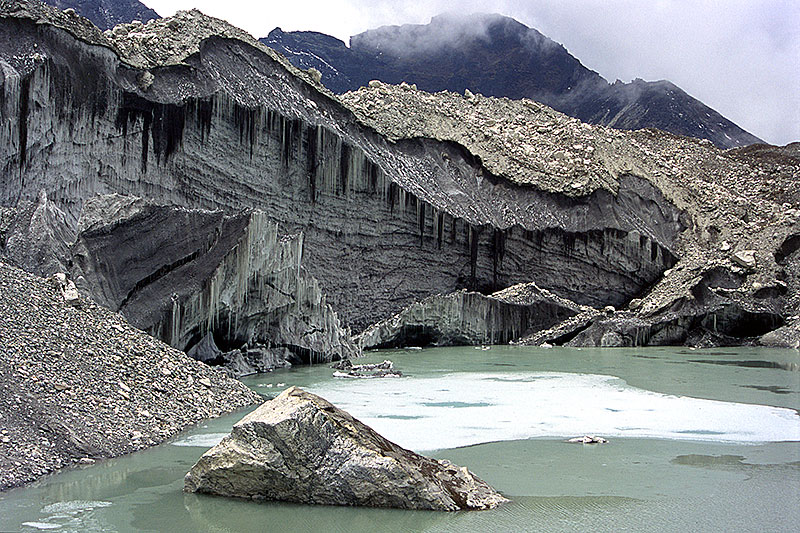 A large supraglacial pond on Lhotse Glacier with 10 m-high cliffs draped in dirty icicles. The thickness of the debris cover is clearly visible. | 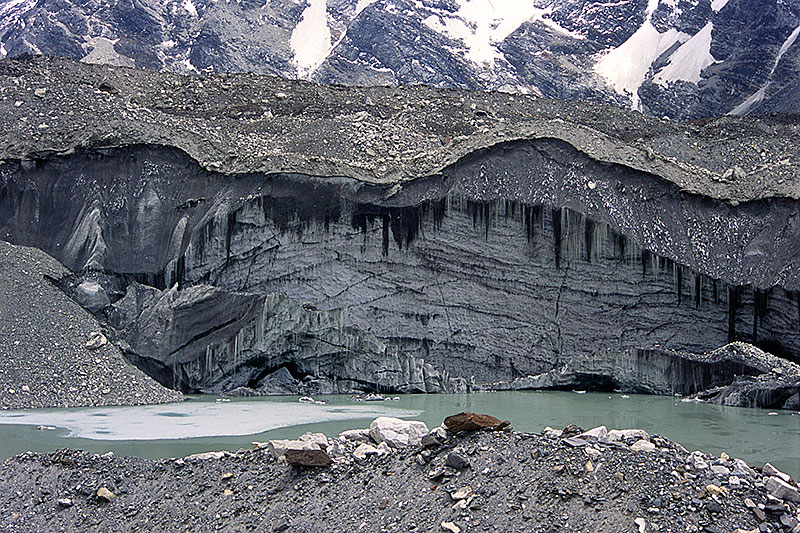 Structural detail in another part of the ice cliff around the pond. The diagonal debris layers may be thrusts. | 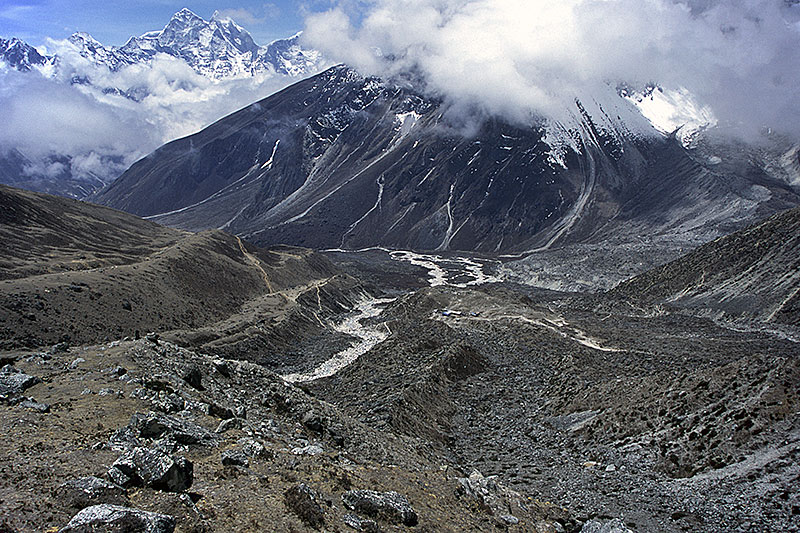 Looking down-valley over the snout area of Lhotse Glacier from the left lateral moraine, showing the main outflow from the glacier. | 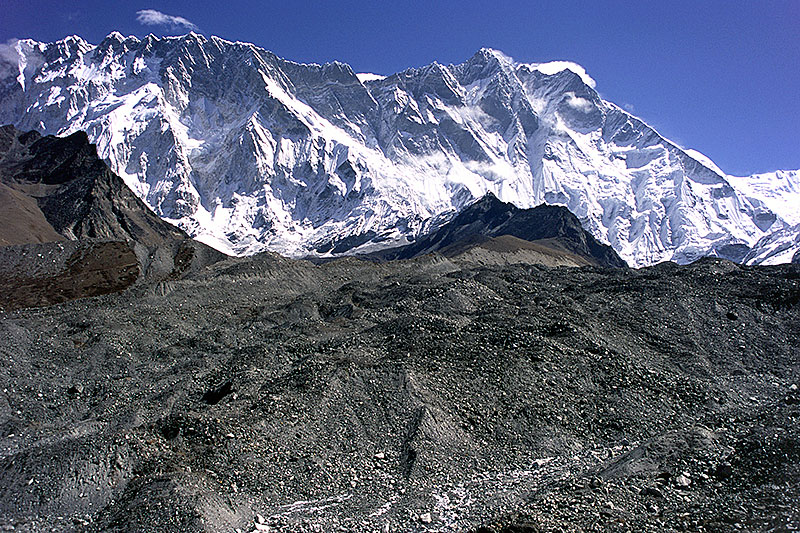 The ill-defined snout of the glacier, with the main supraglacial stream. Lhotse is in the background. |